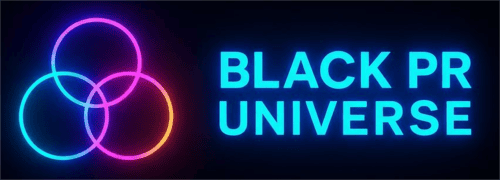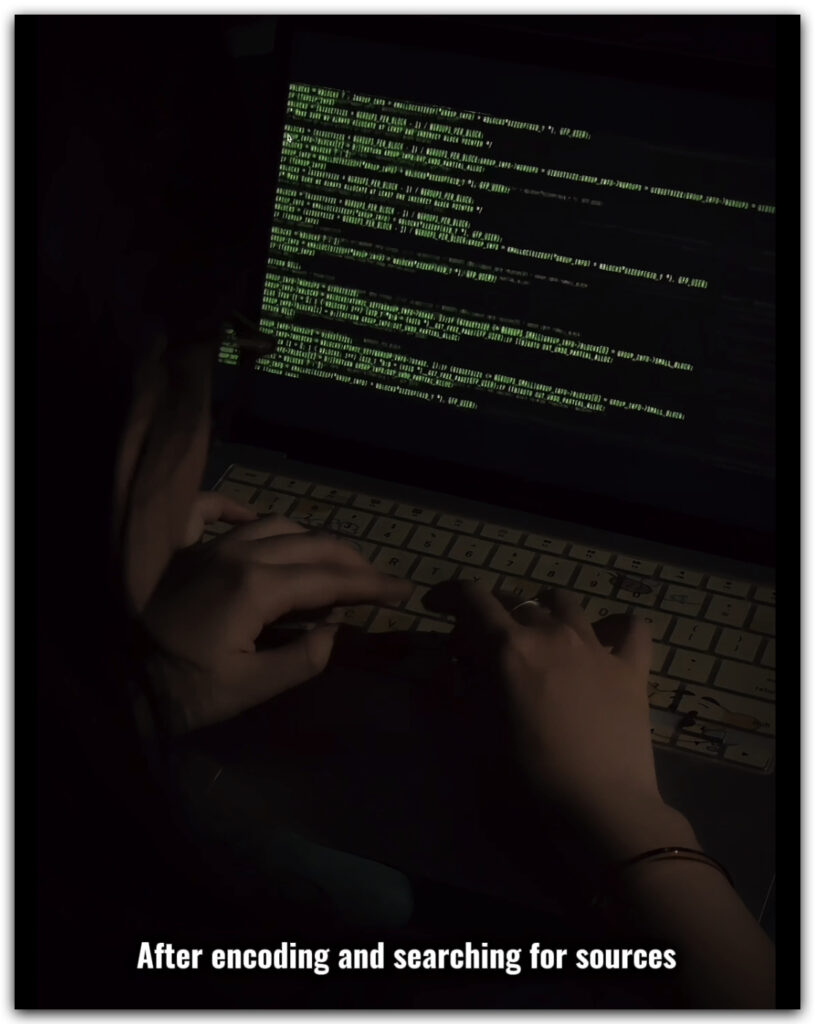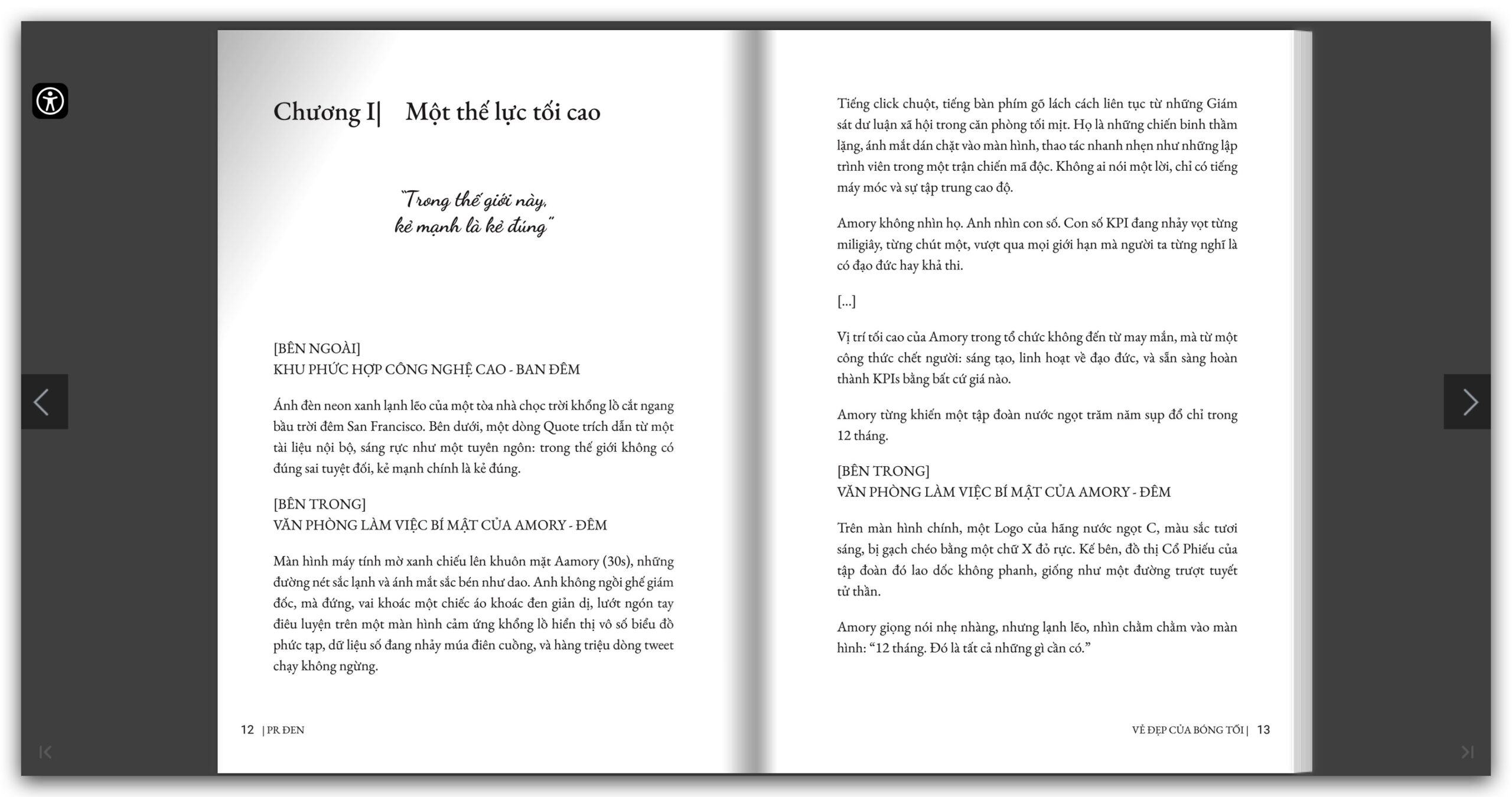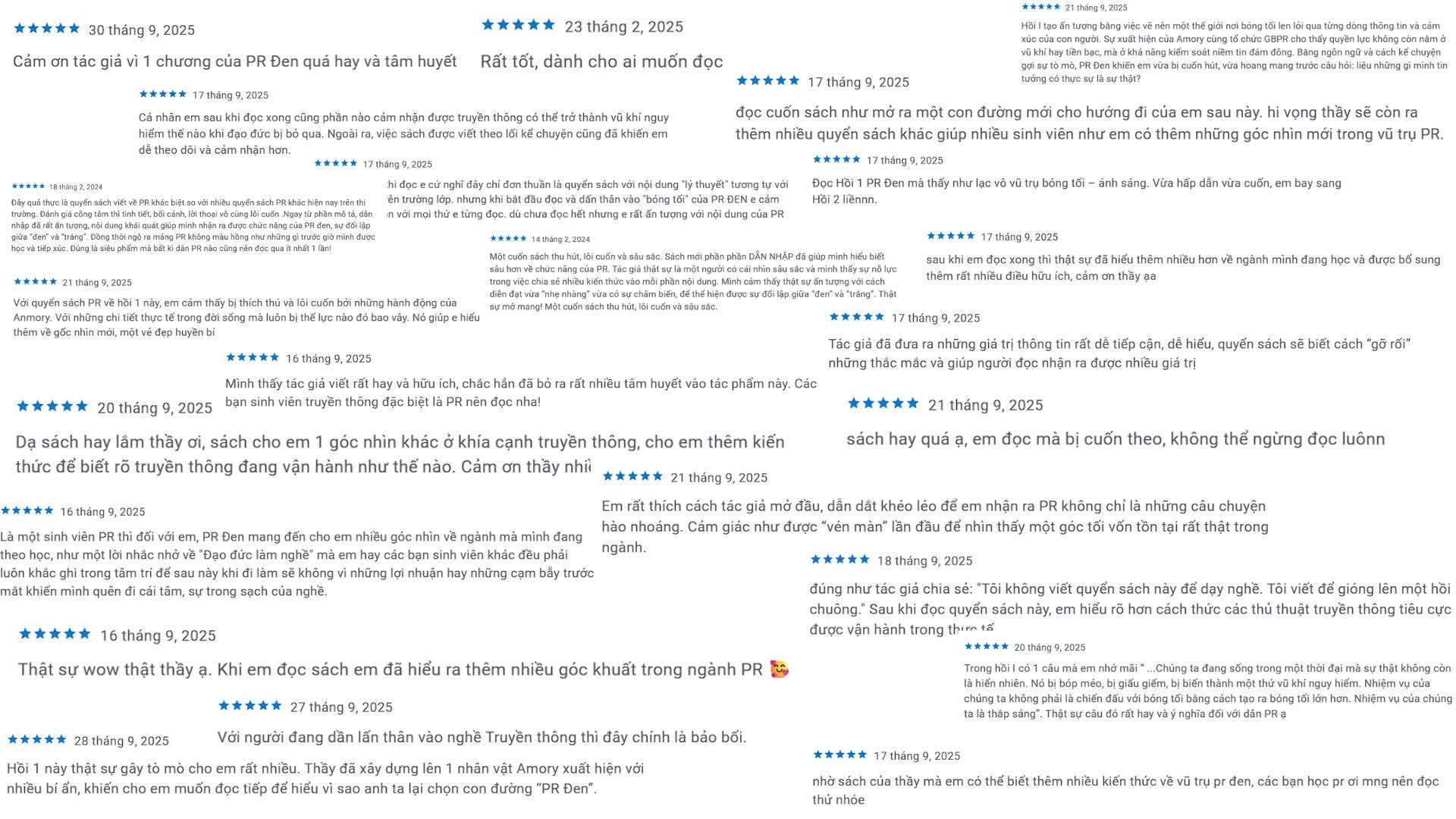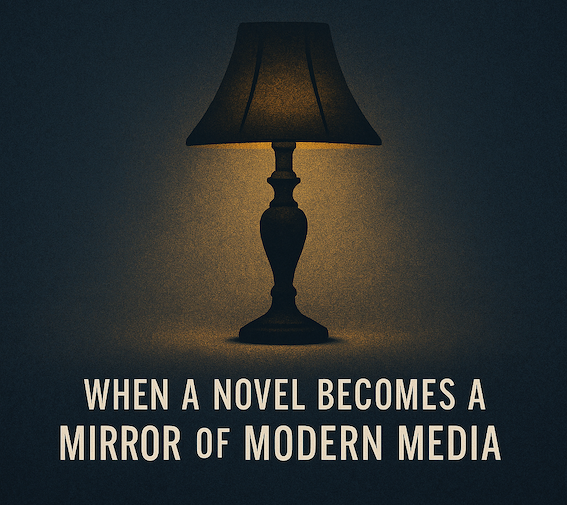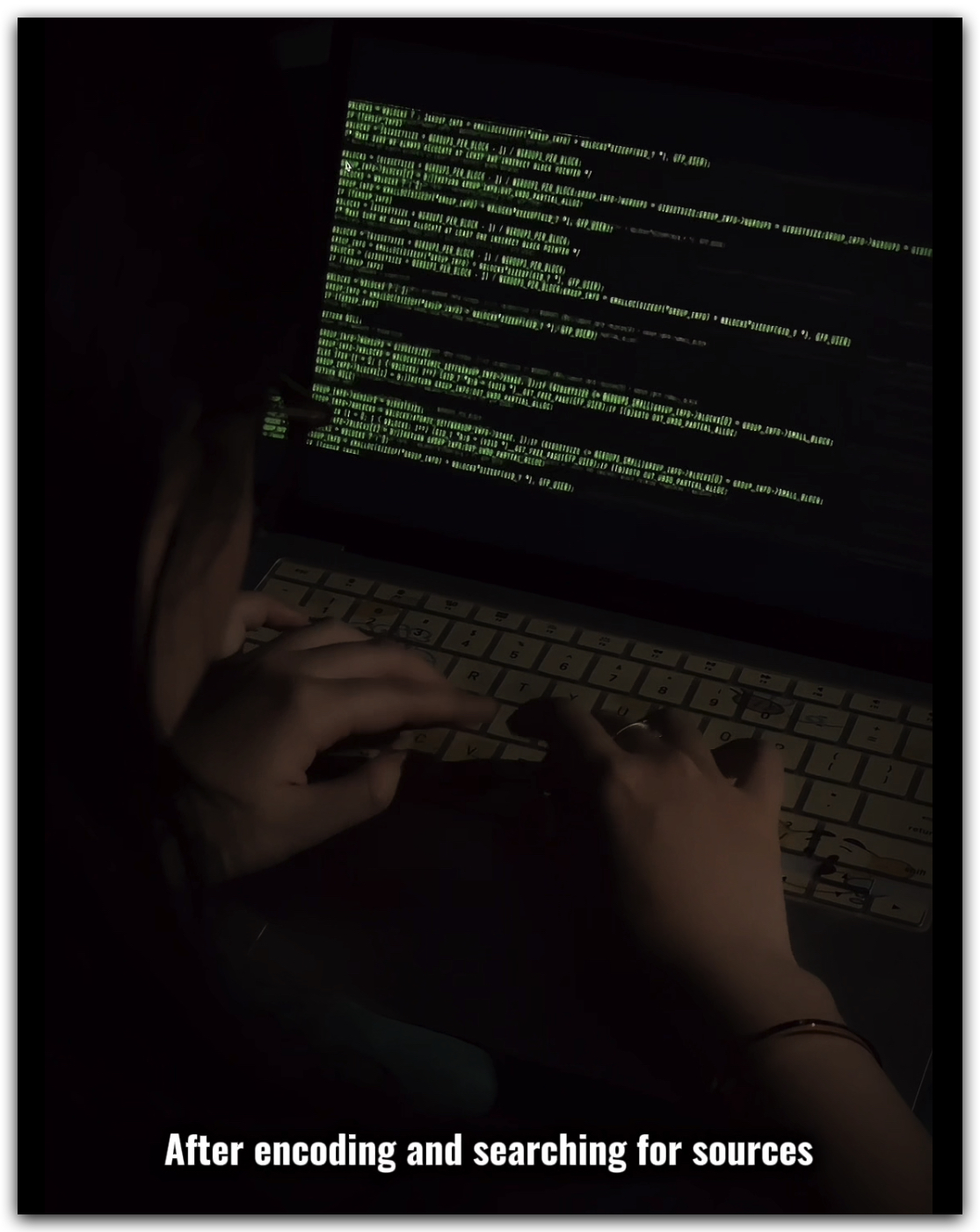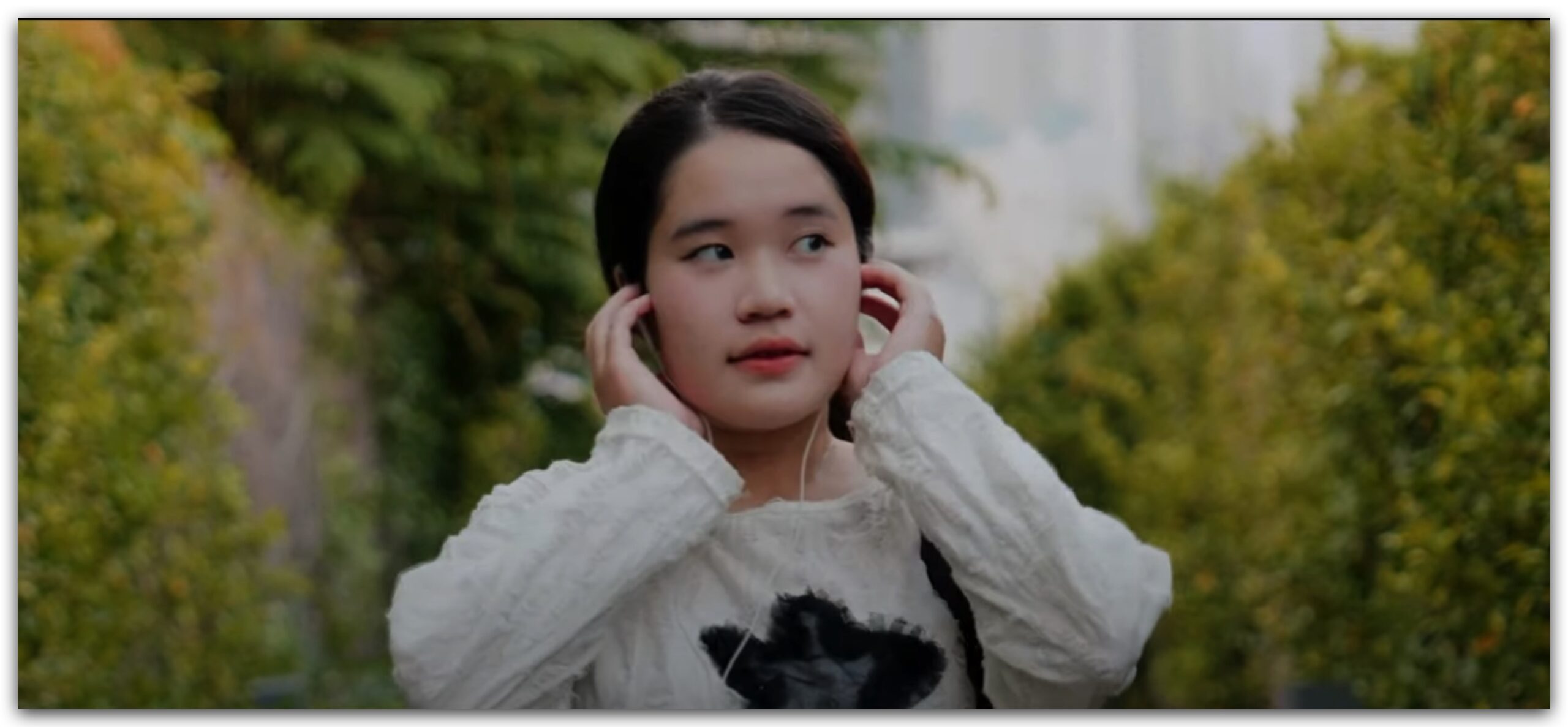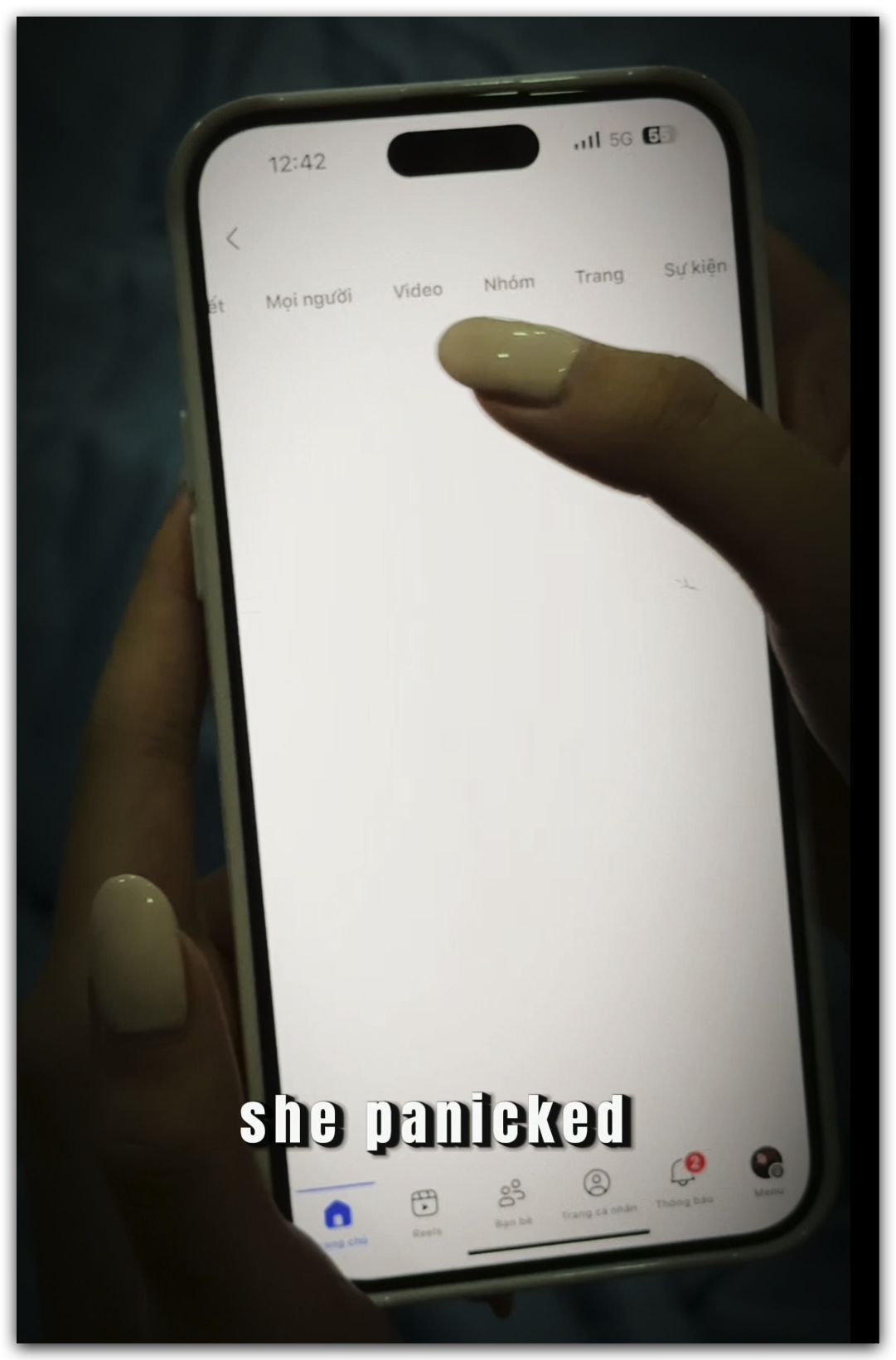In today’s digital age, the concept of fake news is no stranger to anyone. But when a group of Gen Z students turn classroom lessons into noir-style media products, the public gets to witness—visually and viscerally—how truth can be distorted and “recolored.” The project Black PR: The Beauty of Darkness (PR Đen – Vẻ đẹp của Bóng tối) has created a unique playground where students learn, create, and engage in dialogue with society.
Case Study 1 – Pho Huong: One Share Can Kill
The first video tells the story of a family-owned noodle shop. Through manipulated images, a bowl of fragrant pho is transformed into a grotesque “spoiled meat soup,” accompanied by malicious comments. Shot in noir style with half-lit frames and suspenseful sound design, the video delivers a direct warning: a single careless share can destroy someone’s life.
For the public, this is not just a hypothetical scenario—it mirrors real incidents where small eateries and brands have been ruined by online rumors. For students, the clip is a powerful reminder of ethical responsibility when it comes to sharing information.
Case Study 2 – Fake Milk: When Truth Is Recolored
The second video explores one of humanity’s most primal fears: the safety of family and children. A carton of pure white milk turns into a murky, tainted liquid. Through sharp editing and haunting narration, the clip illustrates how manipulated information can incite panic, spark boycotts, and leave long-term scars.
For audiences, the message is clear: fake news is no joke—it can erode trust and even destroy lives. For students, it is an exercise in storytelling that reveals how media can serve as both a tool and a weapon.
Alongside the two main videos, the student team also produced two recap clips. One documents the production process—from brainstorming to editing—capturing the tense yet creative energy of the classroom. The other compiles audience reactions, from astonishment to self-reflection: “How many times have I shared a post without fact-checking?”
These recaps not only provide vivid context but also underscore the essence of co-creation: students are not passive learners but active voices in the social dialogue.
Educational Value: Learning by Doing
What sets this project apart is its educational power. Instead of analyzing distant case studies, students created their own. They learned teamwork, scriptwriting, audiovisual production, and most importantly, how to engage with a real audience. This was more than coursework—it was a chance to “live inside Black PR,” balancing professional skills with critical thinking.
The Bigger Picture – Black PR Universe
The “Pho Huong” and “Fake Milk” videos are not isolated works. They form part of the Black PR Universe, where Black PR – The Beauty of Darkness expands into a transmedia world: ebook, audiobook, vodcast, workshops, and student-produced media.
If Harry Potter built a fantasy universe and Black Mirror explored dystopian sci-fi, Black PR takes the rare noir path—reflecting truth through darkness. What makes it even more distinctive is the role of Gen Z as co-creators, not just consumers.
From Learners to Creators
The “Pho Huong” and “Fake Milk” projects demonstrate that Gen Z is not confined to textbooks. They are building stories, challenging narratives, and leaving their mark.
Black PR delivers a dual message: to the public, stay alert against fake news; to students, understand the weight of every piece of information you produce. From classroom exercises to noir-inspired videos, one truth emerges: when Gen Z steps into darkness, they are not consumed by it, they illuminate it with their own generational light.
![]()
